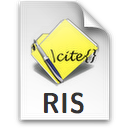

| REVIEW |
 |
 |
Drought is one of the most damaging types of abiotic stresses that causes significant annual yield losses, and poses a serious threat to sustainable agriculture. However, like other stressors, the drought triggers in plants a wide range of responses that are implemented at the molecular, cellular and organism level and aimed at reducing the damaging effects and formation of plant tolerance to water deficit. The study of plant adaptive responses to drought and interpretation of mechanisms to enhance drought tolerance requires adequate and reliable methods of experimentation and objective methods for assessment of research results. The review examined three types of current models that are used in experiments on the effect of drought on plants, namely, soil, water, and agar models. The main advantages and disadvantages of each model are discussed including models with drought conditions simulation by providing PEG in the root medium but the choice of optimal model should be determined depending on the specific problems solved by the experimenter. Currently, researchers have a wide range of methodological approaches and tools for objective assessment of changes in physiological and biochemical parameters of plants in response to the drought. Among the most common are methods associated with the assessment of such parameters as stomatal conductance, photosystem II efficiency using PAM fluorometry, accumulation of osmotically active substances. Special attention is given to methods of assessing the activity of the antioxidant systems in plants, primarily of ascorbate-glutathione cycle as one of the most efficient methods in screening species and varieties of plants on drought tolerance. It should concluded that for the successful development of new strategies aimed at the improvement of drought resistance of plants the acquisition of knowledge is required with the use of current molecular biological methods based on the application of metabolomics and proteomic analyses of plants.
Key words: drought stress tolerance, PEG, model experiments, method of drought stress assessment

